por Nadia Rodríguez
Growing up in Queens, New York within a Latino immigrant family the closest I got to being outdoors was the neighborhood playground, along with occasional trips to Central and Flushing Meadow Park. These were short day trips that consisted of barbecues, lawn lounging, and sneaking over to the handball courts to crush on whatever dreamy boy was around. In essence, these were socializing opportunities and not necessarily moments designed to commune in nature.
the experience was torturous; my only escape was the woods.
My interest in the outdoors was originally ignited during a short residency I had in the Upstate New York area. I was 6 or 7 years old and was sent off to live in a now-defunct facility called the Asthmatic Children’s Foundation (ACF) for a year or so. Though my parents had the best intentions in placing me there, the experience was torturous; my only escape was the woods. Nestled in between a network of lush trees, mountains, and lakes stood an industrially designed single-story building where I was housed with other Brown and Black asthmatic city kids. We all had different issues acclimating to our new surroundings and reacted accordingly. Some acted out while others created alternative families with the other kids. I did a little of both, but I also made the surrounding woods my haven. I hid amongst the trees, ran in fields, caught tadpoles, and made up imaginary worlds to escape into. Once my parents recognized how unhappy I was living there, they pulled me out and brought me back home. I was happy to be back, but I missed the woods. I missed the feeling of being alone yet connected to something bigger than myself even if I didn’t recognize that feeling for what it was at the time. It wouldn’t be until my adult years that I would ever really get to visit the woods in the same way.
My interest in the outdoors was reignited by the promise of a trip to Alaska that did not end up panning out. And although I was unable to make it that far out into the Northwest, I was determined to make it as far out as I could. I reached out to a good friend who lived in Washington State and shared my plan with him. He offered me his support, a place to stay, and his company on my journey. So with that in mind I bought a ticket, trained weekly, and started collecting gear for my trip. To say that this experience changed my life would be an understatement—it was a homecoming. We ended up driving through and camping out on Mt. Rainier, hiking arbitrary trails that caught our fancy along the way. Everything up there felt magical, lush, and picturesque, like a postcard or state emblem come to life. I could taste the earth in the air.
Spending time outdoors is how I find peace and connection, not only to the Earth, but to my ancestors who lived off the Earth. It is my inheritance.
Every sight I saw, every moment experienced, I experienced with my heart in my throat and excitement pulsing through my veins. It was a spiritual awakening of sorts and I haven’t looked back since. Spending time outdoors is how I find peace and connection, not only to the Earth, but to my ancestors who lived off the Earth. It is my inheritance. The outdoors were and continue to be my sanctuary. As Frank Lloyd Wright said “I put a capital N on nature and call it my church.”

Being in contact with nature has tremendous healing powers and it belongs to us all. Too often Brown and Black communities do not have the same access to outdoor spaces as white Americans do, and we lose touch with nature and our connection to it. It is imperative that we maintain our lineage to the Earth and allow ourselves to experience everything the outdoors has to offer when we have the opportunity to do so. My hope is that we continue to create more and more opportunities for ourselves and for our communities.
Nadia Rodriguez is a hiking/camping enthusiast from New York who takes special interest in social and environmental justice, and equity advocacy. She works for the National Audubon Society and contributes to the organization’s ED&I efforts. She’s also the Co-Owner of Luna Ruda, an online retail business selling ethically sourced – fair trade products from South American artisans. Nadia enjoys spending time with her son, thrifting & record shopping, and engaging in self-care practices.


